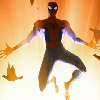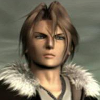 AllosaurusMember4115 XPNov-04-2018 12:10 PM
AllosaurusMember4115 XPNov-04-2018 12:10 PMPart Six: Early Triassic, 248 MYA; Dawn of the Mesozoic Era
Four million years after the Mother of All Mass Extinctions left the Earth for dead, the planet is beginning to show its first signs of recovery. Although it will take millions of years, life is slowly pulling itself back from the brink--and it will take even greater forms than in the preceding Paleozoic Era.
The planet’s climate has changed yet again, as temperatures have cooled from the Siberian Traps eruptions. The deserts aren’t as brutally hot as they were at the end of the Permian, and although the climate is still relatively dry, it’s still wetter than before.
In the dawn of the Triassic, therapsids still dominate the landscape. By far the most common are the Lystrosaurus, the legendary survivors of the Permian Extinction. They roam Pangaea in vast herds, stripping areas of vegetation. The herds constantly have to migrate in search of plants to consume. However, deep within the Pangaean forests, a rival is developing. Although insects are in these forests, these won’t grow to the same sizes as their Carboniferous cousins; it’s the animal that eats them who will rival our four-legged ancestors. A pair of jaws snatches up a dragonfly--a small animal that resembles a lizard. However, he’s so much more.
This is Euparkeria. This small form may not look like much of a threat to our ancestors, but she has a unique adaptation: the ability to stand on two legs. This allows her greater speed and agility. She will lay the foundations for a new group of diapsid archosaurs, and one of the greatest groups of animals that will ever exist: the dinosaurs. The kin of Euparkeria will eventually grow into titans like Barosaurus and Tyrannosaurus. They will abandon her insectivorous diet and go on to dominate the planet for millions of years. But for now, she’s a fugitive, scurrying around the feet of the larger therapsids.
It’s time for the annual migration of a massive herd of Lystrosaurus. They will have to go through a ravine, then face a brutal challenge. They’re too slow and cumbersome to travel down the fissure’s slope, so they will have to travel through the center of it. This leaves them vulnerable to ambush hunters--especially under the darkness of night.
As the sun sets, the herd continues traveling, moving at a slow and steady pace. They continue their long trek, like their ancestors who migrated from Siberia during the Permian Extinction. The herd is unaware that they're being stalked by a Euchambersia. This hunter is a nocturnal predator. Like Euparkeria, he's smaller than the Lystrosaurus, though he's more closely related to them than Euparkeria is. When you compare this hunter's size to the larger Lystrosaurus, he may not look like a threat. But he has a killer edge: a venomous bite.
The Euchambersia stands atop a rock, watching the herd. Then, he takes the leap, landing on the back of one. He sinks his teeth in before getting thrown off the larger animal. The Lystrosaurus begins to feel the venom take effect as it enters her bloodstream. She collapses as the Euchambersia approaches, beginning to eat her in her dying moments. The herd moves on. There are so many Lystrosaurus that dead individuals are easily replaceable.
Dawn sees the herd stand before their final challenge: a river. It may not look like a challenge, but it's the river's inhabitants that make it deadly. A group of Proterosuchus is watching the herd from afar. They usually gather for the annual migration of the Lystrosaurus. Like Euparkeria, the Proterosuchus are archosaurs, but unlike her, they'll give rise to crocodilians.
The herd stands at the water's edge, reluctant to go in. They're aware of the danger, but the on the other side lies fresh vegetation. The first one takes the leap, using his strong legs to propel him through the water. The Proterosuchus don't attack yet. They're waiting for more of the herd to enter the water so there will be more food. As more of the herd jumps in, the predators hone in on the therapsids.
With so many animals moving at once, there's a steady supply of prey for the carnivores. The Lystrosaurus have few natural defenses, especially when they're out of their element. Many of the herd who are going in won't come out on the other side. Many of the herd are drowned by the archosaurs, who grab them by the neck. The waters are painted red with the blood of the dead Lystrosaurus. However, with so many of them, the herd can recover from the massacre. But soon, the stem-mammals will go into decline. The Permian Extinction was devastating to them.
However, the Great Dying will give rise to more advanced life-forms. With her competition weakening, Euparkeria will have an opportunity to reshape the face of life on Earth for the rest of the Mesozoic. Her descendants will become prehistory’s most iconic animals: dinosaurs. However, first, they will have to survive their small beginnings and their distant archosaurian cousins.
Part Seven: Late Triassic, 220 MYA
The stem-mammals are entering the final days of their reign. In time, another group of animals will take their place as the rulers of the Earth. Placerias are the last of the stem-mammals. These ancient creatures are bulky and cumbersome, walking on all fours. In comparison, early dinosaurs like Coelophysis possess an advanced pelvis passed down to them from Euparkeria. This allows them to stand upright on two legs. They’re the first animals to adopt a bipedal stance. Walking on only two legs provides many advantages, such as greater speed and agility. It also frees up their forelimbs, allowing them to use them for other purposes. Later dinosaurs will take advantage of useable arms, using claws for different purposes.
A herd of Placerias stops for a drink at a river. Watching them from the red desert hills is a single female Coelophysis. Although she’s much faster, the Placerias are far larger and more powerful. She’ll have to target a sick, old, or injured individual. Other animals soon arrive at the river, including a herd of Desmatosuchus. These herbivorous archosaurs are related to dinosaurs, but unlike their cousins, they walk on all fours. With the Placerias, they feed on the vegetation near the water’s edge. The wind carries a scent to the herbivores’ nostrils, causing them to grow skittish. The scent of fear. Suddenly, a massive head rears up and bites down on the pelvis of a Placerias. This is Postosuchus; like the Desmatosuchus, he’s a distant cousin of the dinosaurs. Like Coelophysis, he walks on his hind legs.
The Placerias move out of the area, leaving the injured one behind. The wounded Placerias collapses, weakened from a combination of blood loss and shock. The Coelophysis knows to keep her distance. She watches wearily as the Postosuchus feasts. After the carnivore has eaten his fill, the Coelophysis moves in. The carcass has been mostly stripped, but there’s still some meat left. Her smaller size means she doesn’t need as much food to survive. After a few bites, she’s moved on.
*3 months later*
The dry season has hit Pangaea. No water has fallen in three months, only available in small pools. The female Coelophysis stands atop a hill. She’s joined by her pack-mates. The dinosaurs cling together for safety and survival. The Postosuchus is watching them. With the waters drying up, he’s been weakened by thirst. The Coelophysis see him and run. The Postosuchus snags one of them by the tail, crushing the dinosaur with ease. The dinosaur is merely a small snack, and he will have to find larger food if he is to survive.
*6 months later*
The Placerias herd is now gone. They could not endure the heat and thirst. The Postosuchus has lost his principal source of prey, and his desperation leads him to attack a Desmatosuchus. The predator has no stealth advantage, so he must win a head-on confrontation. The herbivore bellows, swinging her tail as the Postosuchus lunges forward. He rears up on his hind legs, grabbing onto her back. His teeth cannot penetrate her armored scales and simply break. She leans into one side, making use of her best defense: her lethal shoulder spikes. The Desmatosuchus rams it into the stomach and knee of the Postosuchus, forcing him to scream in pain. He knows he won’t win this hunt; he limps away, blood trailing behind him.
The female Coelophysis has been watching the battle from afar. She and her flock, consisting of twelve other individuals, follows the blood trail. The Postosuchus watches them surround him. Normally, he’d easily fight them off, but his injuries are too great. He collapses, weakly growling in pain as blood pools around him. The dinosaurs keep their distance; although he’s injured, he could easily kill one if it got too close.
Thunder roared overhead as the clouds shield the skies from the sun. For the first time in nine months, it’s raining, and it’s a monsoon. The Postosuchus watches the rainfall as he rests his head on the sandy ground, never to stand up again. The Coelophysis rip into the predator’s body, gorging on the fresh meat. As the rain gradually calms into a sun shower, they head to a nearby waterfall to drink. The water satiates their thirst, but it attracts more attention: a herd of Plateosaurus. They look very different from the Coelophysis, but both of them are saurischian dinosaurs. The smaller, more agile carnivores know they’re too small to pose a threat to them and flee. There’s no going back. This is it; the Age of the Dinosaurs has begun. And it will continue for the next 160 million years.
***
Twenty million years later, Pangaea began to split apart, sparking a mass extinction that killed eighty percent of life on Earth. This was the final blow to the stem-mammals, reducing our ancestors to small creatures eeking out a living in the shadow of the dinosaurs. With their competition gone for good, the dinosaurs will grow larger. Next time, we will meet one of the first large carnivorous dinosaurs, and the ancestors of the largest land animals of all time.
"Part of the journey is the end..."
 AllosaurusMember3811 XP2018-11-04 12:16:00
AllosaurusMember3811 XP2018-11-04 12:16:00Can't wait for the parts focusing on the age of the dinosaurs, although the build-up has been done very well.
Good grief.







